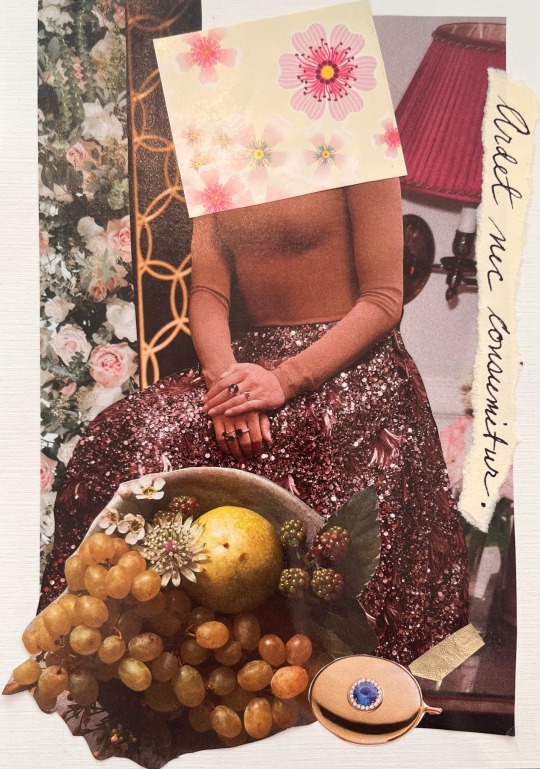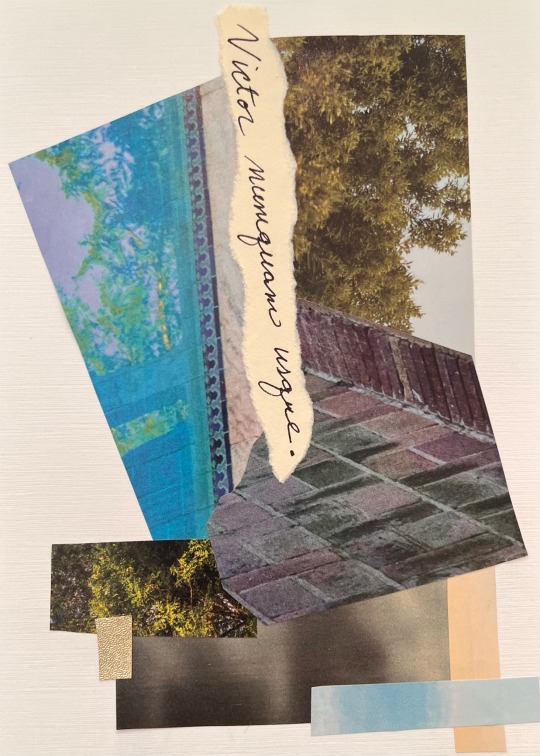#city of Peekskill New York
Explore tagged Tumblr posts
Text
#Wheelabrator
#Peekskill
#CityOfPeekskill
#PeekskillNY
#WestchesterCounty
#NewYorkState
#Westchester
#Energy
#Election2024
Most, if not all, households will, with the approach of a national election, consider what are called “kitchen table” issues. These include, of course, the cost of providing light and heat in our homes.
What have we seen since Indian Point closed? Yes, an increase in the cost of power, which compels households to somehow cope with this enlarged expense, while at the same time experiencing ever-increasing costs for food, consumer goods and services, medications, housing, commuting costs, et cetera.
The Wheelabrator has provided energy, employment, and tax revenue since 1984. I would submit that, after having moved from Mount Vernon, NY in 2011, to Peekskill, my health has certainly not been negatively affected and, in significant respects, is better now than it has ever been.
In their first 30 years of operation they converted more than 20 million tons of waste into energy. Wheelabrator has continuously achieved emission levels well below state and federal standards to protect public health. Their process reduces greenhouse gas emissions by diverting waste from landfills. The waste is burned to heat boilers, producing high pressure steam for a turbine generating 60K kilowatts of electricity per hour, sufficient to power 67,000 homes.
As per the American Lung Association the main causes of asthma are: allergies, obesity, smoking, air pollution, chronic health conditions, and a family history of asthma (factors which certainly existed prior to the opening of Wheelabrator). As per the AAFA certain substances can cause one to develop allergic asthma, including: dust mites, pet dander, mold, pollen, cockroaches, and rodents. I do not think Wheelabrator causes these risk factors in residential housing.
One also must consider how increased electricity rates affect small businesses. Greatly increased electricity rates have effectively shuttered many businesses in Germany, England, and Ireland as their power plants were shut down and power bills doubled or tripled. Increased rates kill businesses, which would ordinarily employ people, who in turn pay taxes and support their local economies.
In individual homes, in Europe, many must choose between heating and food due to skyrocketing electricity charges.
All too often, the virtue-signallers have policies which in practice will harm those who can least afford it—seniors on fixed incomes, single parents scraping by, families coping with increased costs for food, housing, consumer goods, medications, commuting costs, tuition fees — worsening the economic juggling act for ordinary families—so they may clap themselves on the back whilst the rest of us are made cold and poor by exorbitant energy costs.
Especially in this economic climate—we want abundant, reliable, inexpensive power. We do not want our power bills to be tripled to satisfy the egos of pie-in-the-sky activists.
#Wheelabrator#peekskill ny#peekskill new york#peekskill n.y.#city of peekskill#hudson valley#hudson valley ny#city of peekskill new york#westchester#hudsonvalley#westchester county#election 2024
2 notes
·
View notes
Text

Metro-North GE B23-7 804
Ex-Conrail 1906
Peekskill, New York July 1984
#commuter train#mncr#metro north commuter railroad#mta#metropolitan transportation authority#cr#conrail#1984#new york city#trains#passenger train#history#peekskill#new york
22 notes
·
View notes
Text


HEY WITCH! Shop Local!!
Are you looking for Witchy Materials??
Books, Candles, Herbs & Stuff.
Check this list of places 👇🏼
Please #ShareThisPost and Add your local stores to the list.
Physical/Online Stores are welcome ❤️
Aum Shanti Bookshop | Manhattan, NY
Namaste Bookshop | Manhattan, NY
Catland | Brooklyn, NY
Moonlight Treasures | Millport, New York
SoulJourney | New Jersey.
New Moon Books | Pompano Beach, FL.
LightWeavers Metaphysical Boutique | CA
Pentagram Shoppe | Salem
City Alchemist | Texas
Crescent City Conjure | New Orleans
Seagrape Apothecary | Oregon
Q. Meb - Queen Meb | Oregon
WitchLab | Ohio
Curio, Craft & Conjure | Charlotte, NC
Star + Splendor | Voorheesville, NY.
Arts & Crafts: Botanica & Occult Shop | Pennsylvania
Dreaming Goddess | Poughkeepsie, NY
StellaLuna LLC | Connecticut.
Persephone's Pearl | Peekskill, NY
Photo by: Elhoim Leafar ✌🏻
Stores (IG accounts)
@aumshantinyc @namastebookshopnyc @catlandbooks @souljourneynj @newmoonbooks @lightweavers_magickal_boutique @pentagramsalem @cityalchemist @crescentcityconjure @seagrapeapothecary @q.mebpdx @witchlab @curiocraftconjure @starandsplendor @nestilana @artsncraftspgh @dreaminggoddess @stellalunallc
11 notes
·
View notes
Text
Today the church remembers the Martyrs of Memphis, Sr. Constance, Nun, and Her Companions.
Orate pro nobis.
Late in the summer of AD 1878, yellow fever struck Memphis, Tennessee. The populace all tried to flee, leaving behind those unable to escape, mostly the poor and those already ill. Within 10 days of the first yellow fever death in Memphis, more than half the population fled the city in a panic. They left “by every possible conveyance — by hacks, carriages, buggies, wagons, furniture vans, and street drays,” wrote Keating. “By anything that could float on the river, and by the railroads. The stream of passengers seemed endless, and they seemed to be as mad as they were many.”
Left behind were still some 20,000 men, women, and children, but Memphis faded into a ghost town. Shops and offices were boarded up, houses locked and shuttered. An eerie silence smothered the city, broken only by the occasional booming of cannons (fired to break up the “poisons” in the air), and the steady clop-clop of doctors’ wagons or carts hauling caskets. At night, smoldering fires of burning bedding and clothing — the last belongings of fever victims — lit the yellow-armbanded Howard Association members, who scurried from house to house aiding the sick.
Victims dropped dead in the streets, and bodies were discovered each morning in the city’s parks. Entries in the sister’s journals describe an abandoned town with the bodies of the dead lying where the fell, children in homes with their dead parents…scenes of pure horror. Sister Constance wrote: “Yesterday I found two young girls, who had spent two days in a two-room cottage with the unburied bodies of their parents, their uncle in the utmost suffering and delirium, and no one near them. It was twenty-four hours before I could get those fearful corpses buried, and then I had to send for a police officer … before any undertaker would enter that room.”
The Episcopal Cathedral of St. Mary’s, and its adjacent Church Home, were in the poor part of town, the center of the most infected area, and became shelters for victims. The cathedral staff and nuns of the Sisters of St. Mary, who operated the Church Home, faced enormous burdens in caring for the sick and dying. The Cathedral of St. Mary, then a plain wooden church, stood as a beacon of hope amid the gloom, and two priests there — Fr. Charles Parsons and Fr. Louis Schuyler — also played heroic roles during the epidemic. They joined dozens of other church members throughout the city who, along with the Howard Association, died at their posts during the ordeal.
Some of the sisters were on retreat in Peekskill, New York, when the epidemic broke out, and instead of keeping a safe distance they rushed back to Memphis. When the news of the deaths of the local priests got out, over 30 priests from all over the nation volunteered to come to Memphis. Father W.T. Dickinson Dalzell came from Shreveport, La., since he had already survived the disease and was immune—he was also a trained physician. With his arrival, daily Eucharist resumed and the Sacrament was carried to the dying Sisters.
Sister Constance was the first of the nuns to be stricken. As she died on September 9, her last words were “Alleluia, Hosanna,” simple words of praise remembered and inscribed on the cathedral"s high altar.
Sister Constance’s companions in service to the sick and dying, Sisters Thecla and Ruth, soon followed her to the grave, as did Sister Frances, headmistress of the Church Home. She had nursed some thirty children at one time and had watched twenty-two die. Fr. Louis Schuyler, a chaplain to the Sisters of St. Mary, also died of the fever, as did Fr. Charles Parsons. Fr. Parsons was blessed with a vision of heaven as he lay dying and his last words were, “Lord Jesus, receive my spirit.”
When winter came and the mosquitoes died off, the epidemic ended, 200 towns and cities across the South lay wasted. Yellow fever had infected more than 100,000 people, causing some 20,000 deaths — more than 5,000 in Memphis alone.
5,150 people died in the Memphis Yellow Fever epidemic of 1878, and many of them were formerly healthy people who had stayed to help the sick until succumbing themselves. The city buried 1,500 of its dead in a mass grave on a bluff overlooking the Mississippi -- and pretty much forgot about them until January 3, 1971, when the grave site became Martyrs Park.
On this day we honor those who gladly risked their own lives in the name of Jesus in order to save the lives of many and to assuage the final suffering of others.
Embolden us to work for the healing of all those in need, seeking to love others as you have loved us, Lord Christ.
We give you thanks and praise, O God of compassion, for the heroic witness of Constance and her companions, who, in a time of plague and pestilence, were steadfast in their care for the sick and dying, and loved not their own lives, even unto death; Insipre in us a like love and commitment to those in need, following the example of our Savior Jesus Christ; who with you and the Holy Spirit lives and reigns, one God, now and for ever.
Amen.

2 notes
·
View notes
Text
United Real Estate Myrtle Beach: Coastal Living at Its Best
For those dreaming of coastal living, United Real Estate Myrtle Beach offers a fantastic range of properties, from beach houses to vacation rentals. Myrtle Beach is a popular destination for those seeking relaxation by the sea, and its real estate market has a diverse offering of properties that suit all types of buyers, including unique beachfront homes and custom-built estates.
Whether you're looking for a second home by the ocean, a retirement retreat, or an investment property, United Real Estate Myrtle Beach provides expert guidance and a wide selection of properties. With the added benefit of a thriving vacation rental market, Myrtle Beach is a great place to explore the potential of short-term rental investments.
United Real Estate Pacific States: A Real Estate Powerhouse on the West Coast
The United Real Estate Pacific States region encompasses a wide range of cities and communities on the West Coast, including areas like California, Oregon, and Washington. These states are home to some of the most stunning and unique homes in the U.S., with properties that range from modern, sustainable designs to properties that incorporate the natural landscape.
Whether you're looking for a home near the coast, in the mountains, or in a vibrant urban setting, United Real Estate Pacific States offers opportunities for all types of buyers. Their knowledgeable agents can assist you in finding a property that fits your needs and preferences, ensuring that you discover a home that feels uniquely yours.
United Real Estate Partners New Orleans: Embrace the Charm of the Big Easy
United Real Estate Partners New Orleans offers a wealth of options for those seeking a home in one of the most culturally rich cities in the U.S. Known for its vibrant music scene, historic architecture, and unique French Quarter homes, New Orleans is a fantastic place to buy a distinctive property. From Creole cottages to contemporary townhouses, the city has a wide range of properties for every taste.
United Real Estate Partners New Orleans specializes in both residential and investment properties, making it easy for buyers to find homes with historic charm or those with modern amenities in the heart of the city. Their team offers a deep knowledge of the local market, helping you navigate New Orleans’ one-of-a-kind property scene.
Other Notable United Real Estate Locations
In addition to the locations mentioned above, United Real Estate Peekskill, United Real Estate Tucson, and United Real Estate Washington DC offer their own unique real estate opportunities:
United Real Estate Peekskill: Located just north of New York City, Peekskill offers a variety of homes that combine historic charm with modern upgrades.
United Real Estate Tucson: In the heart of Arizona, Tucson offers desert-inspired homes and sprawling estates with mountain views.
United Real Estate Washington DC: The nation's capital is home to iconic homes, from classic row houses to luxurious condos, and United Real Estate Washington DC can help you find the perfect fit.
For more information about any of these regions and to browse listings, visit A.Land, where you can find a wide selection of properties and connect with real estate experts.
Conclusion: Your Dream Home Awaits
No matter where you are looking to buy, United Real Estate offices across the U.S. offer expert services and unique properties that cater to a wide range of tastes. Whether you're interested in exploring unique houses for sale in the USA or looking for specialized services in cities like Denver, Ames, or Myrtle Beach, United Real Estate provides a diverse range of options.
For more details on properties in these areas and beyond, or to connect with an agent, visit A.Land, your trusted resource for finding and managing unique real estate opportunities across the country. Discover the perfect home that fits your lifestyle, and let the experts guide you every step of the way.
0 notes
Text
Events 10.9 (after 1920)
1934 – An Ustashe assassin kills King Alexander I of Yugoslavia and Louis Barthou, Foreign Minister of France, in Marseille. 1936 – Boulder Dam (later Hoover Dam) begins to generate electricity and transmit it to Los Angeles. 1937 – Murder of 9 Catholic priests in Zhengding, China, who protected the local population from the advancing Japanese army. 1941 – A coup in Panama declares Ricardo Adolfo de la Guardia Arango the new president. 1942 – Australia's Statute of Westminster Adoption Act 1942 receives royal assent. 1950 – The Goyang Geumjeong Cave massacre in Korea begins. 1962 – Uganda becomes an independent Commonwealth realm. 1963 – In Italy, a large landslide causes a giant wave to overtop the Vajont Dam, killing over 2,000. 1966 – Vietnam War: the Republic of Korea Army commits the Binh Tai Massacre. 1967 – A day after his capture, Ernesto "Che" Guevara is executed for attempting to incite a revolution in Bolivia. 1969 – In Chicago, the National Guard is called in as demonstrations continue over the trial of the "Chicago Eight". 1970 – The Khmer Republic is proclaimed in Cambodia. 1980 – Pope John Paul II greets the Dalai Lama during a private audience in Vatican City. 1981 – President François Mitterrand abolishes capital punishment in France. 1983 – South Korean President Chun Doo-hwan survives an assassination attempt in Rangoon, Burma (present-day Yangon, Myanmar), but the blast kills 21 and injures 17 others. 1984 – The popular children's television show Thomas The Tank Engine & Friends, based on The Railway Series by the Reverend Wilbert Awdry, premieres on ITV. 1986 – The Phantom of the Opera, eventually the second longest running musical in London, opens at Her Majesty's Theatre. 1986 – Fox Broadcasting Company (FBC) launches as the fourth US television network. 1992 – The Peekskill meteorite, a 27.7 pounds (12.6 kg) meteorite crashed into a parked car in Peekskill, New York 1995 – An Amtrak Sunset Limited train is derailed by saboteurs near Palo Verde, Arizona. 2006 – North Korea conducts its first nuclear test. 2007 – The Dow Jones Industrial Average reaches its all-time high of 14,164 points before rapidly declining due to the 2007–2008 financial crises. 2009 – First lunar impact of NASA's Lunar Precursor Robotic Program. 2012 – Pakistani Taliban attempt to assassinate outspoken schoolgirl Malala Yousafzai. 2016 – The Arakan Rohingya Salvation Army launches its first attack on Myanmar security forces along the Bangladesh–Myanmar border. 2019 – Turkey begins its military offensive in north-eastern Syria.
0 notes
Text

Attorney William Haywood Burns (June 15, 1940 - April 2, 1996) was born in Peekskill, New York. He was known for his defense of Angela Davis as well as serving as the first Black dean of a law school in New York.
He began his work in civil rights when he was only 15 years old when he led a movement to integrate a public pool in his hometown of Peekskill. He attended Harvard University for his undergraduate studies and graduated from Yale University Law School. He worked for a New York law firm, but he left to become the first law clerk for Constance Baker Motley, who had been appointed to the US District Court. He became assistant counsel NAACP Legal Defense and Educational Fund.
During his time at the NAACP Legal Defense and Educational Fund, he became the general counsel to Dr. Martin Luther King, Jr.’s Poor People’s Campaign. He sought new ways to address social justice issues. In 1969, he was one of the founding attorneys of the National Conference of Black Lawyers.
He is most remembered for his defense of Angela Davis, who was charged with murder and kidnapping in connection with an escape attempt of Black prisoners at the Marin County Civic Center on August 7, 1970. Davis was not present at the courthouse; nonetheless, she was charged with aggravated kidnapping and murder because she had allegedly planned the episode. His defense was successful, and Angela Davis was acquitted of all charges in June 1972.
In 1974, he became a law professor at the State University of New York while simultaneously coordinating the defense of 62 of the inmates charged in the Attica Prison Riots. He became the dean of the Law School at the City University of New York. His appointment made him the first Black dean of any law school in New York State.
He was survived by his wife Jennifer Dohrn and five children. #africanhistory365 #africanexcellence
0 notes
Text
Maintaining Peekskill's Drainage System: Challenges And Solutions
Peekskill, New York, boasts a rich history and a vibrant community. However, like many cities, it faces challenges in maintaining its drainage system to effectively manage stormwater runoff and prevent flooding. With the growth of urban development and infrastructure, Peekskill's drainage system requires ongoing attention to address these issues. Here, we explore the challenges faced by Peekskill's drainage system and potential solutions to ensure its effective maintenance.
Challenges:
Urban Development: Drainage System In Peekskill continues to grow and develop, the increasing amount of impervious surfaces such as roads, parking lots, and buildings poses a challenge to the drainage system. These surfaces prevent rainwater from infiltrating the soil, leading to higher volumes of runoff that strain the drainage infrastructure.
Aging Infrastructure: Much of Peekskill's drainage infrastructure is aging and in need of repair or replacement. Cracked pipes, deteriorating culverts, and outdated stormwater management systems contribute to inefficiencies and failures in the drainage system.
Environmental Impact: Poorly maintained drainage systems can have adverse effects on the environment, including erosion, sedimentation, and pollution of waterways. This not only threatens local ecosystems but also impacts water quality and public health.
Limited Funding: Like many municipalities, Peekskill faces budget constraints that can limit the resources available for maintaining and upgrading its drainage infrastructure. Securing adequate funding for essential maintenance and improvement projects is a persistent challenge.
Solutions:
Infrastructure Maintenance: Regular inspection, cleaning, and maintenance of drainage infrastructure are essential for ensuring its functionality and longevity. This includes clearing debris from storm drains, repairing damaged pipes, and removing sediment buildup from culverts.
Sustainable Design: Incorporating green infrastructure practices such as permeable pavement, rain gardens, and vegetated swales can help mitigate stormwater runoff and reduce the burden on traditional drainage systems. These nature-based solutions promote infiltration and filtration of rainwater, improving water quality and reducing flooding risks.
Integrated Planning: Coordinating land use planning with stormwater management efforts is critical for minimizing the impact of urban development on drainage systems. Implementing zoning regulations, site design standards, and development incentives that prioritize sustainable drainage practices can help mitigate future challenges.
In conclusion, maintaining Peekskill's Drainage System In Peekskill various challenges, but with strategic planning and concerted efforts, viable solutions can be implemented to address these issues effectively. By prioritizing infrastructure maintenance, embracing sustainable design practices, integrating land use planning with stormwater management, and engaging the public, Peekskill can ensure the resilience and functionality of its drainage system for generations to come.
For more information visit to the website: https://imlandscapeandmasonry.com/
0 notes
Text
Master Roofers: Your Trusted Partner for Impeccable Roofing in Suffolk and Manhattan
A Roof Above the Rest: Master Roofers' Commitment to Quality in Every Shingle
From the quaint, tree-lined streets of Suffolk to the towering heights of Manhattan, the need for quality roofing transcends all boundaries. At Master Roofers, we don't just build roofs; we engineer havens of safety, efficiency, and style. Our dedication to superior roofing services is evident in every project we undertake, whether it's a cozy bungalow in Islip or a high-rise in Midtown Manhattan.
Suffolk's Shield: Protecting Your Peace of Mind
In Suffolk County, where the climate can be as unpredictable as the coastal tides, Master Roofers stands as a shield against the elements. Our commitment to the communities of Dix Hills, Holbrook, and West Islip is unwavering. We specialize in providing roofing solutions that are not only weather-resistant but also enhance the curb appeal of your home. Whether it's a repair in Coram or a full installation in Lindenhurst, we bring the same level of care and craftsmanship to every job.
Manhattan's Metropolitan Masters: Roofing Redefined
The architectural landscape of Manhattan is as diverse as its inhabitants, and Master Roofers meets this challenge with unparalleled expertise. Our roofing services in the bustling districts of Soho, Chelsea, and the Financial District reflect the sophistication and energy of the city. In the residential havens of the Upper East Side and Harlem, we merge form with function, delivering roofing solutions that protect, preserve, and impress.
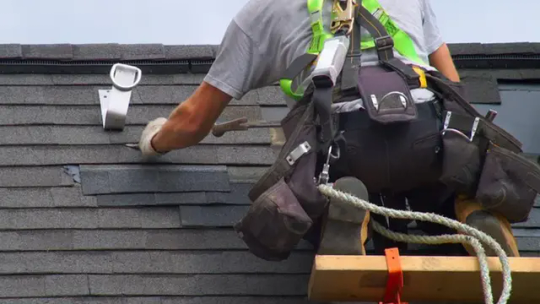
Crafting Comfort from Suffolk to Manhattan: The Art of Roofing
Master Roofers takes the art of roofing seriously. We understand that a roof is more than just a protective layer; it's an integral part of your home's identity. In Suffolk, where homes range from historic to contemporary, our roofs are tailored to honor the architectural integrity of each residence. As we move to the urban jungle of Manhattan, our approach shifts to accommodate the unique roofing challenges posed by the city, ensuring that each building stands out for its resilience and elegance.
Roofing with Integrity: Our Pledge to New York
Personalized Solutions: We recognize the unique requirements of each area we serve, offering personalized roofing solutions that cater to the specific needs of your property.
Cutting-Edge Techniques: Our team stays abreast of the latest roofing technologies and materials to provide you with the most advanced roofing systems available.
Customer Satisfaction: Your trust is our priority. We strive for your complete satisfaction through every phase of the roofing process, from initial consultation to the final installation.
Comprehensive Services: Master Roofers is equipped to handle every roofing need, from minor repairs to major renovations, with the utmost professionalism and efficiency.
Master Roofers invites you to experience the highest standard of roofing services across Suffolk and Manhattan. Our roofs are designed to withstand the test of time, embodying the strength and spirit of New York in every layer. For a roof that offers protection, beauty, and value, look no further than Master Roofers — where excellence is at the heart of everything we do.
Find Services in Cities Mentioned Below:
Roof Repair & Installation Roof Repair & Installation Hawthorne Roof Repair & Installation Armonk Roof Repair & Installation Elmsford Roof Repair & Installation Pleasantville Roof Repair & Installation Larchmont Roof Repair & Installation Port Chester Roof Repair & Installation Peekskill Roof Repair & Installation Ossining Roof Repair & Installation Eastchester Roof Repair & Installation Mount Vernon Roof Repair & Installation Broxville Roof Repair & Installation Mount Kisco Roof Repair & Installation Valhalla Roof Repair & Installation Mamaroneck Roof Repair & Installation Rye Roof Repair & Installation Tarrytown Roof Repair & Installation Scarsdale Roof Repair & Installation New Rochelle Roof Repair & Installation Ardsley Roof Repair & Installation White Plains Roof Repair & Installation Dobbs Ferry Roof Repair & Installation Croton On Hudson Roof Repair & Installation Croton Falls Roof Repair & Installation Sleepy Hollow Roof Repair & Installation Cortlandt Manor Roof Repair & Installation Cortlandt Roof Repair & Installation Buchanan Roof Repair & Installation Briarcliff Manor Roof Repair & Installation Bedford Hills Roof Repair & Installation Bedford Roof Repair & Installation Ardsley On Hudson Roof Repair & Installation Thornwood Roof Repair & Installation Yorktown Roof Repair & Installation Yorktown Height Roof Repair & Installation Yonkers Roof Repair & Installation West Harrison Roof Repair & Installation South Salem Roof Repair & Installation Chappaqua Roof Repair & Installation Somers Roof Repair & Installation Rye Brook Roof Repair & Installation Purchase Roof Repair & Installation Pound Ridge Roof Repair & Installation Pelham Manor Roof Repair & Installation North Castle Roof Repair & Installation North Salem Roof Repair & Installation North White Plains Roof Repair & Installation Mount Pleasant Roof Repair & Installation New Castle Roof Repair & Installation Lincolndale Roof Repair & Installation Montrose Roof Repair & Installation Lewisboro Roof Repair & Installation Millwood Roof Repair & Installation Irvington Roof Repair & Installation Katonah Roof Repair & Installation Greenburgh Roof Repair & Installation Hastings On Hudson Roof Repair & Installation Goldens Bridge Roof Repair & Installation Hartsdale
1 note
·
View note
Text

"DEWEY MUSTERS STATE GUARD; 5 DIE IN HARLEM," New York Daily News. August 3, 1943. Page 2. ---- By Edward Dillon and Neal Patterson ---- Gov. Dewey last night mobilized 8,000 State Guardsmen of New York City and surrounding counties and ordered them to stand by in their armories, ready for duty if rioting and bloodshed flare up again in Harlem. ---- Members of the 17th Regiment, New York Guard. receive rifles at their armory, 34th St, and Park Ave., after they were mobilized by Gov. Dewey last night. ---- The order swelled to more than 16,000 the number of troops, policemen and other forces patroling the streets of the riot-torn Negro community or held in reserve for any emergency.
The Governor's move came as the war-time dim-out was lifted in Harlem, liquor sales were barred, and a 10:30 o'clock amusement curfew was clamped on on the community to help heavily-reinforced police patrols maintain order.
Reports late yesterday showed that five men - all Negroes - had been shot to death, 545 had been injured and more than 500 arrested in Sunday night's rioting.
$5,000,000 Damage. Harlem's night of terror - touched off by a false report that a policeman had killed a Negro - and marked by looting, fist fights, stabbings, gunfire and the hurling of missiles from windows and roofs also had cost merchants and property owners an estimated $5,000,000. This is five times the damage suffered in the Harlem riots of 1935.
Gov. Dewey's order, transmitted through Major Gen. William Ottmann, State Guard commander, directed guardsmen of the five New York City counties and of Westchester, Nassau and Suffolk to report immediately to their armories. Negro members in Harlem also were called.
Of the 8,000, 1,300 were at Camp Smith, Peekskill, for training. These, it was indicated, will be brought back to New York today. Reached at the Hotel Roosevelt, Gov. Dewey said no formal request for mobilization had been (Continued on page 15, col. 1)
Picture caption: Resplendent in tail coats and high hats, which they lifted from a Harlem clothing store, three Negro lads (hats of two visible in background) leave W. 123d St. police station after their arrest.
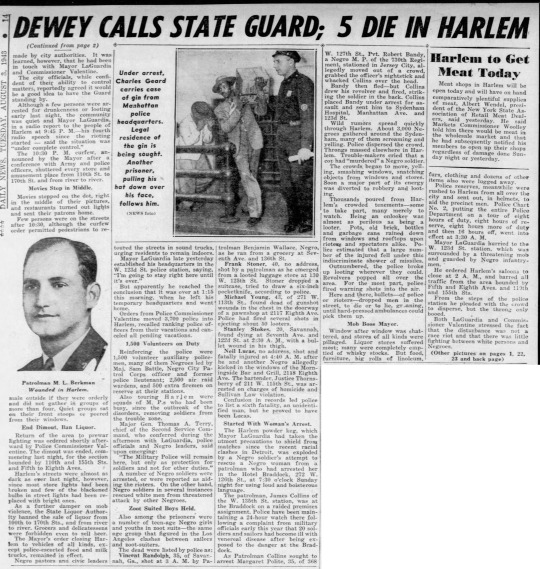
"DEWEY CALLS STATE GUARD; 5 DIE IN HARLEM," New York Daily News. August 3, 1943. Page 15. --- (Continued from page 2) ---- ....made by city authorities. It was learned, however, that he had been in touch with Mayer LaGuardia and Commissioner Valentine.
The city officials, while confident of their ability to control matters, reportedly agreed it would be a good idea to have the Guard standing by.
Although a few persons were arrested for drunkenness or looting early last night, the community was quiet and Mazer LaGuardia, in a radio report to the people of Harlem at 9:45 P. M. his fourth radio speech since the rioting started said the situation was "under complete control."
The 10:30 P. M. curfew, announced by the Mayer after a conference with Army Army and police officers, shuttered every store and amusement place from 110th St. te 170th St. and from river to river.
Movies Stop in Middle. Movies stopped on the dot, right in the middle of their pictures, and restaurants turned out lights and sent their patrons home.
Few persons were on the streets after 10:00, although the curfew order permitted pedestrians to remain outside if they were orderly and did not gather in groups of more than four. Quiet groups sat on their front stoops er peered from their windows.
End Dimout, Ban Liquor. Return of the area to prewar lighting was ordered shortly afterward by Police Commissioner Valentine. The dimout was ended, commencing last night, for the section bounded by 110th and 155th Sts. and Fifth to Eighth Aves.
Harlem's streets were almost as dark as ever last night, however, since most store lights had been broken and few of the blackened bulbs in street lights had been replaced with bright ones.
As a further damper on mob violence, the State Liquor Authority banned the sale of liquor from 100th to 170th Sts., and from river to riser. Grocers and delicatessens were forbidden even to sell beer.
The Mayor's order closing Harlem to vehicles of all kinds, except police-escorted food and milk trucks, remained in effect.
Negro pastors and civic leaders toured the streets in sound trucks, urging residents to remain indoors, Mayor LaGuardia late yesterday established his headquarters in the W. 123d St. police station, saying, "I'm going to stay right here until it's over." But apparently he reached the conclusion that it was over at 1:15 this morning, when he left his temporary headquarters and went home.
Orders from Police Commissioner Valentine moved 3,700 police into Harlem, recalled ranking police officers from their vacations and canceled all pending vacations.
1,500 Volunteers on Duty Reinforcing the police were 1,500 volunteer auxiliary policemen, many of them Negroes led by Maj. Sam Battle, Negro City Patrol Corps officer and former police lieutenant; 2,000 air raid wardens, and 300 extra firemen on reserve at their stations.
Also touring Harlem were squads of M. P.s who had been busy, since the outbreak of the disorders, removing soldiers from the trouble zone.
Major Gen. Thomas A. Terry, chief of the Second Service Command, who conferred during the afternoon with LaGuardia, police officials and Negro leaders, said upon emerging:
"The Military Police will remain here, but only as protection for soldiers and not for other duties."
A number of Negro soldiers were arrested, or were reported as aiding the rioters. On the other hand Negro soldiers in several instances rescued white men from threatened attack by other Negroes.
Zoot Suited Boys Held. Also among the prisoners were a number of teen-age Negro girls and youths in zoot suits - the same age group that figured in the Los Angeles clashes between sailors and zoot-suiters.
The dead were listed by police as:
Vincent Randolph, 35, of Savannah, Ga, shot at A. M. by Patrolman Benjamin Wallace, Negro, as he ran from a grocery at Seventh Ave. and 136th St.
Frank Stoner, 40, no address, shot by a patrolman as he emerged from a looted luggage store at 130 W. 127th St. Stoner dropped suitcase, tried to draw a six-inch pocketknife, according to police.
Michael Young, 43, of 271 W. 113th St. found dead of gunshot that end of gunshot wounds in the chest in the doorway of a pawnshop at 2117 Eighth Avn. Police had fired several shots in ejecting about 50 looters.
Stanley Stokes, 20, Savannah, found dying at Seventh Ave, and 1224 St. at 2:00 A. M., with a let wound in his thigh.
Neil Lucas, no address, shut and fatally injured at 4:19 A. M. after be and another Negro allegedly kicked kicked in the windows of the Morningside Bar and Grill, 2118 Eighth Ave. The bartender, Justice Thornsberry of 211 W. 11th St, was arrested on charges of homicide and Sullivan Law violation.
Confusion in records led police to list a sixth fatality, an unidentified man, but he proved to have been Lucas.
Started With Woman's Arrest. The Harlem powder keg, which Mayor LaGuardia had taken the utmost precautions to shield from matches since the recent racial clashes in Detroit, was exploded by a Negro soldier's attempt to rescue a Negro woman from a patrolman who had arrested her in the Hotel Braddock, W. 120th St., at 7:30 o'clock Sunday night for using loud and boisterous language.
The patrolman, James Collins of the W. 135th St. station, was at the Braddock en a raided premises assignment. Police have been maintaining a 24-hour watch there fol lowing a complaint from military officials early this year that 20 soldiers and sailors had become ill with venereal disease after being exposed to the danger at the Braddock.
As Patrolman Collins sought to arrest Margaret Polite, 35, of 368 W. 127th St., Pvt. Robert Bandy, a Negro M. P. of the 730th Regiment, stationed in Jersey City, allegedly, moved out of a crowd, grabbed the officer's nightstick and whacked Collins over the head.
Bandy then fled - but Collins drew his revolver and fired, striking the soldier in the back. Collins placed Bandy under arrest for assault and sent him to Sydenham Hospital, Manhattan Ave. and 123d St.
Wild rumors spread quickly through Harlem. About 3,000 Negroes gathered around the ham, many of of them screaming and yelling. Police dispersed the crowd. Throngs massed elsewhere in Harlem. Trouble makers cried that a cot had "murdered" a Negro soldier.
The crowds began to move, yelling, smashing windows, snatching objects from windows and stores. Soon a major part of its energy was diverted to robbery and looting.
Thousands poured from Harlem's crowded tenements - some to take part, many merely to watch. Being an onlooker was almost as perilous as being a looter. Pots, old bricks, kettles and garbage cans rained down from windows and rooftops upon rioters and spectators alike. Police estimated that a large number of the injured fell under this indiscriminate shower of missiles.
Outnumbered, the police broke up looting wherever they could. Revolvers popped all over the area. For the most part, police fired warning shots into the air. Here and there, bullets of police or rioters dropped men in the street, to die or to lie, groaning, until hard-pressed ambulances could pick them up. Mob Boos Mayor Window after window was shattered, and stores of all kinds were pillaged. Liquor stores suffered most, many were completely emptied of whisky stocks. But food. furniture, big rolls of linoleum, furs, clothing and dozens of other items also were lugged away.
Police reserves, meanwhile were rushed to Harlem from all over the city and sent out, in helmets, to aid the precinct men. Police Chart No. 2, putting the entire Police Department on a tour of eight hours of duty, eight hours of reserve, eight hours more of duty and then 16 hours off, went into effect at 3:30 A. M.
Mayor LaGuardia hurried to the W. 1234 St. station, which was surrounded by a threatening mob and guarded by Negro infantrymen.
He ordered Harlem's saloon's to close at 2 A. M., and barred all traffic from the area bounded by Fifth and Eighth Aves. W. 125th St. Stoner dropped a area. For the most part, police traffic from the area bounded by Fifth and Eight Aves. and 119th and 155th Sts.
From the steps of the police station he pleaded with the crowd to disperse, but the throng only booed.
Both LaGuardia and Commissioner Valentine stressed the fact that the disturbance was not a race riot and that there was little fighting between white persons and Negros.
(Other pictures an pages 1, 22, 23 and back page)
Harlem to Get Meat Today Meat shops in Harlem will be open today and will have on hand comparatively plentiful supplies of meat, Albert Weslel, president of the New York State Association Retail Meat Dealers, said yesterday. Markets Commissioner Woolley told him there would be meat in the wholesale market and that he had subsequently notified his members to open up their shops regardless of damage done Sun-day night or yesterday.
Top picture: Under arrest, Charles Geard carries case of gin from Manhattan police headquarters. Legal residence of the gin is being sought. Another prisoner, pulling his hat down over his face. follows him.
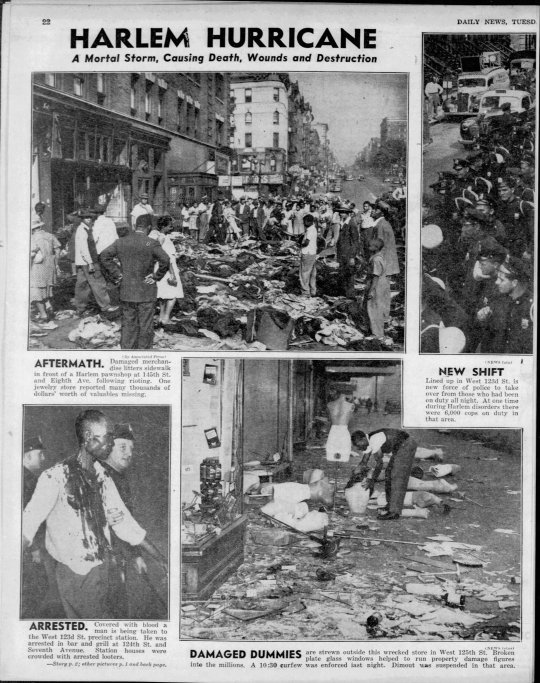
"HARLEM HURRICANE: A Mortal Storm, Causing Death, Wounds and Destruction," New York Daily News. August 3, 1943. Page 22. --- Top left: AFTERMATH. Damaged merchandise litters sidewalk in front of a Harlem pawnshop at 145th St. and Eighth Ave, following rioting. One jewelry store reported many thousands of dollars worth of valuables missing.
Bottom left: ARRESTED. Covered with blood a man is being taken to the West 123d St. precinct station. He was arrested in bar and grill at 124th St. and Seventh Avenue. Station houses were crowded with arrested looters.
Bottom right: DAMAGED DUMMIES are strewn outside this wrecked store in West 125th St. Broken plate glass windows helped to run property damage figures inte the millions. A 10:30 curfew was enforced last night. Dimout was suspended in that area.
Top right and next page: NEW SHIFT Lined up in West 123d St. is new force of police to take over from those who had been on duty all night. At one time during Harlem disorders there were 6,000 cops an duty in that area.

"ILLEGAL SELF-SERVICE: Looters at Work During Height of Harlem Disorders," New York Daily News. August 3, 1943. Page 23. ---- Top right: LOOTING. An actual fotograph taken at height of rioting, shows youths merrily cleaning out a Harlem store of its provisions. One looter hands dowa goods from shelves to eager hands. Another, his bag filled, makes for home. He was probably intercepted by cops
Bottom left: VOLUNTEERS. Residents of Harlem were quick to volunteer their services to help restore order to district. Major Samuel J. Battle (in uniform) and Edward S. Lewis, executive secretary of the N. Y. Urban League, pin auxiliary arm hands on the volunteers, who will patrol the streets. Mayor LaGuardia emphasized that disturbance was not a race riot.
Bottom right RIOT VICTIM. Michael Young, fatally injured in the Harlem disturbances, is being carried to a waiting ambulance by policemen. Mayor said last night: "We have the situation under complete control"

"Woman Who Started Riots Held in $10,000," New York Daily News. August 3, 1943. Page B12. ---- By VINCENT ADAMS The woman whose loud and boisterous behavior in a hotel lobby Sunday night precipitated Harlem's wave of riots and pillage played a silent and sullen role yesterday as more than 500 prisoners were arraigned in four Manhattan courts.
Held in $10,000 bail on an assault charge in Felony Court, which was operating in shifts to take care of the swarm of prison ers, Margaret (Margie) Polite, 35, of 368 W. 127th St., pouted and glared when asked if she "felt sorry."
Like the Polite woman, all of the prisoners appeared to be Negroes. This fact was cited by various officials as an evidence that there was no element of a "race riot" in the mob scenes which spread through Harlem like wildfire Sunday night and early yesterday.
More than 400 persons had been arraigned in Felony Court alone when that court adjourned at 7:30 P. M. until 10 this morning. In Harlem Magistrates Court 78 persons were arraigned and in Washington Heights Magistrates Court 10.
Twelve persons were arraigned in Night Court before Magistrate Alfred M. Lindau, on disorderly conduct charges. Seven were paroled for further hearing in Washington Heights Court on Aug. 10; three drew suspended sentences; one was fined, and the 12th was held was in $100 bail.
Four magistrates sat in Felony Court. Magistrates Thomas A. Aurelio and Thomas H. Cullen Jr. were replaced shortly after 4 P. M. by Magistrate Charles E. Ramsgate, who was relieved at 6 P. M. by Magistrate Raphael P. Koenig. As each magistrate was relieved a fresh Assistant District Attorney and court staff of clerks and stenographers appeared on the scene so that the procession of prisoners could go on until all had an opportunity to request bail.
Next to the Polite woman, the prisoner who attracted most attention was Mrs. Florine orine Rob. erta, 40, of 135 Mt. Vernon St., Middletown, Conn. Mrs. Roberts is the mother of Pvt. Robert Bandy, of the 730th Regiment, Jersey City, who came to the Polite woman's assistance when she was placed under arrest.
Mrs. Roberts was also held in $10,000 bail in Felony Court on a charge of assault. She was said to have struck Patrolman James Collins of the E. 135th St. station, who had been stationed in the lobby of the Hotel Braddock, Eighth Ave. and 126th St.
Magistrate Aurelio, during the arraignment of prisoners who were brought into court in batches of 25 at a time, remarked: "This outburst of lawlessness is not understandable. As far back as I can remember, the residents of Harlem have lived in harmony. Now, of late, on the slightest provocation, large numbers are moved to disorder, as if giving in to some pent-up feeling. It would seem as if some insidious propaganda is misleading otherwise would be peaceful people."
Picture caption: Standing beside a detective (left) at their arraignment in Felony Court are Margie Polite (second from left). Mrs. Florine Roberts and Frank Valdez. Riot reportedly started when son of Mrs, Roberts interfered with a patrolman who was arresting Miss Polite.

"Harlem Heavily Guarded. While Pvt. Robert Bandy, Negro M. P., whose shooting precipitated Harlem rioting, recuperates [left] in Bellevue Hospital, troops of the 17th Regiment of the New York Guard prepare [Above] their equipment at the 71st Regiment Armory. They were part of 8,000 Guardsmen mobilized as a precautionary measure last night by Gov. Thomas E. Dewey. Army troops, policemen and other forces patrolled the streets of Harlem last night where war-time dimout was lifted, liquor sales banned and a 10:30 o'clock amusement curfew imposed. Damage caused by rioters has been estimated at $5,000,000. Story on page 2; other pictures in center fold and back page." - from the New York Daily News. August 3, 1943. Back page.
#harlem#new york#race riot#1943 harlem riot#police shooting#police killing#police racism#african americans#world war ii#nypd#new york national guard#rioting#law and order politics#history of crime and punishment
0 notes
Text
Peekskill Family Restaurant

Peekskill Family Restaurant is a beloved institution in the city of Peekskill, New York. Located in the heart of downtown, this family-owned and operated restaurant has been serving up delicious, home-style cooking for over 20 years.
The menu at Peekskill Family Restaurant features a wide variety of dishes to suit every taste. Breakfast is served all day and includes traditional favorites like pancakes, waffles, and omelets, as well as more unique options like the "Famous Peekskill Breakfast Sandwich" and "Corned Beef Hash and Eggs." For lunch and dinner, diners can choose from a selection of sandwiches, burgers, and salads, as well as hearty entrees like meatloaf, roast turkey, and pork chops. There's also a children's menu for the little ones.
One of the things that sets Peekskill Family Restaurant apart from other restaurants in the area is its commitment to using fresh, high-quality ingredients in all of its dishes. The restaurant sources its meats, poultry, and produce from local farmers and suppliers whenever possible, ensuring that diners are getting the best possible taste and nutrition.
In addition to its delicious food, Peekskill Family Restaurant is also known for its friendly and welcoming atmosphere. The staff is always happy to answer questions and make recommendations, and they take pride in making everyone feel like part of the family. Whether you're a regular customer or a first-time visitor, you can expect to be greeted with a smile and treated like an old friend. The restaurant also offers catering services for events and parties, and they are open 7 days a week. Overall, Peekskill Family Restaurant is a great choice for anyone looking for a casual, family-friendly dining experience. With its delicious food, friendly service, and welcoming atmosphere, it's no wonder that this restaurant has become a staple of the Peekskill community.
0 notes
Text

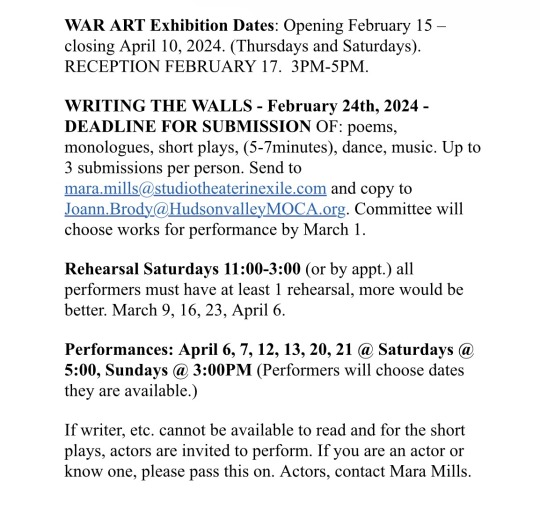

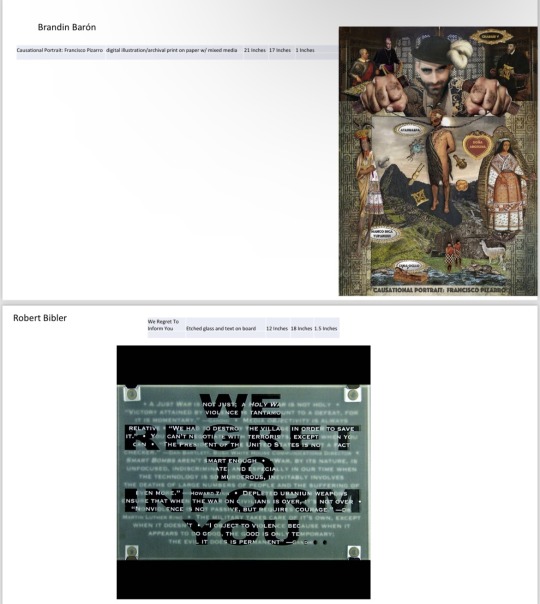


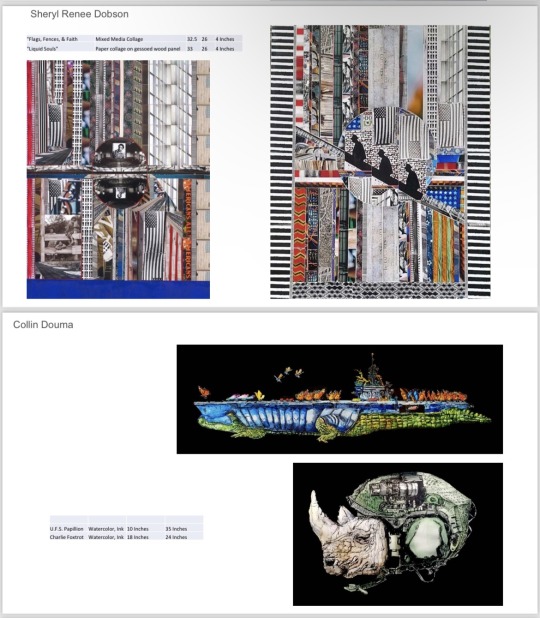
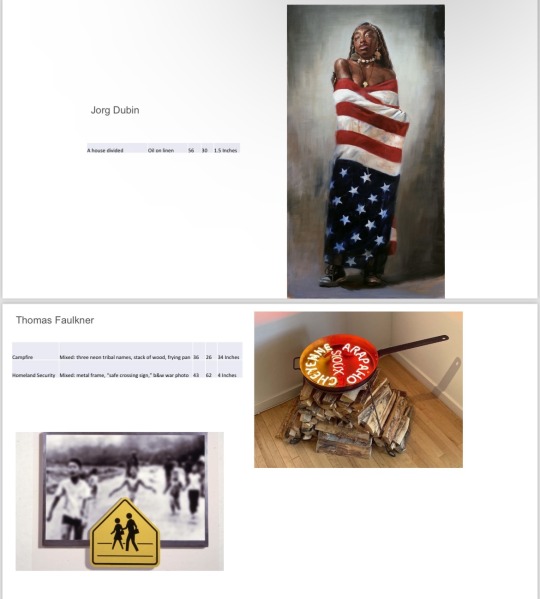


I could not share all the images here….check the HVMOCA website or come see the exhibit at the opening reception on the 17th!!!
#peekskill ny#peekskill new york#peekskill n.y.#city of peekskill#hudson valley#hudson valley ny#city of peekskill new york#westchester#hudsonvalley#westchester county#call for submissions#HVMOCA#studio theater in exile#ekphrasis#ekphrastic poetry#dance#short plays#choreography#monologue
2 notes
·
View notes
Text

Conrail RDC's in MTA livery headed to Poughkeepsie pull up to the former New York Central station at Peekskill, NY. Metro North would take over this operation in 1983. February 5, 1978
#commuter train#cr#conrail#mta#metropolitan transportation authority#1978#new york city#trains#passenger train#history#peekskill#new york
24 notes
·
View notes
Text
A lot of ‘Hart’ and the ‘Wright’ stuff
By Jonathan Monfiletto
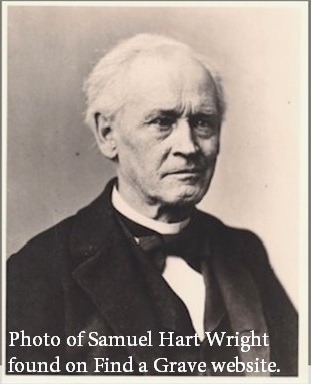
One of the greatest scientists to ever call Yates County home gathered nuts as a boy and sold them so he could purchase two astronomy textbooks. The man billed as one of three Yates County scientists to have a plant genus named after him used to sneak up to the roof of his family’s home after his parents went to sleep so he could study the sky and identify the stars and planets.
So began the distinguished career of Samuel Hart Wright, the only child of James and Zilliah Hart Wright – who came from Peekskill in Westchester County to a farm in Starkey when their son was in his early youth – who had high aspirations but little opportunity to achieve them. After “the rudimental education afforded by the country school,” as Berlin Hart Wright’s “Memories of Local Naturalists” terms it, Samuel Hart Wright’s father denied him further learning and figured what little education the father had attained was good enough for the son.
Still the boy, born in 1825, did what he could to learn what he could, borrowing books whenever possible and eagerly absorbing their content and even taking them out into the fields (he and his religious and zealous parents labored on their farm every day but Sunday) and reading and solving problems while he worked. Once, two mechanics hired to construct an ornamental fence on the family farm brought astronomical books and charts out of their tool chests and spent one evening identifying the stars, planets, and constellations in the sky. The boy Samuel paid attention and listened, vowing to gain such knowledge for himself.
In order to do so, Samuel left the family farm “as soon as legally possible,” his son later wrote, securing a position as a teacher, marrying Joanna McLean, and purchasing a home in the village of Dundee. With support from his wife’s parents, he studied medicine in the College of Physicians and Surgeons in New York City. After his graduation, Dr. Hart Wright rode with a local practitioner and later began his own practice. However, medicine was not the lucrative field it is today, so he decided to delve into his interest in mathematical astronomy and prepare an almanac manuscript.
Berlin Hart Wright’s biography of his father states Samuel prepared his first manuscript for 1840, but since Samuel would have been 15 years old then I have wondered if this is an error of some kind. Since Samuel and Joanna married in 1845, I wonder if Samuel’s first almanac was prepared for 1850 and his son was off by 10 years in his writing.
In whatever year it actually happened, Samuel sold his first almanac on his third attempt, earning $20 in cash and $20 in medical books for the manuscript. “The books were secured by driving 50 miles after them but the cash is still due,” Berlin Hart Wright wrote. The following year, Samuel was preparing another manuscript when he learned of the death of David Young – an astronomer who made calculations for many almanacs – and visited his widow in the Young home in Nyack. Looking over the man’s book collection, Samuel noticed a homemade memorandum book that contained the addresses, descriptions, and prices for the publishers with which Young worked. Samuel successfully solicited those publishers with his own manuscripts, and his almanac business finally took off.
In 1855, Joanna died shortly after Samuel received his doctor of medicine from Geneva Medical College (near the present-day site of Hobart & William Smith Colleges). Samuel began studying botany in his spare time to drown his grief in work and took botany trips to different parts of Yates County. Along these trips, he met Mary Jane Burtch, who became his second wife the following year. Mary Jane is the sister of the father of Verdi Burtch, making Samuel the uncle by marriage of another well-known Yates County scientist.
Dr. Hart Wright turned his attention toward botany and began collecting his own specimens and exchanging them with other collectors at home and abroad. He found and named new species; he even acquired equipment for microscopic examination of his plants and their parts. He also began studying insect life as it applies to botany and agriculture and obtained more collections and classifications.
The Yates County Chronicle actually had a mathematical department from February 1872 to August 1880 that Samuel oversaw, and he wrote a column for the newspaper in which he presented mathematical problems and solutions for an audience eager to learn. For approximately 430 weeks – there were 11 editions in that timespan without a mathematical column – Dr. Hart Wright, with a variety of contributors and diverse topics in mathematics – promoted mathematics and education through the newspaper.
In 1874, Samuel handed the almanac business off to his son and took up yet another scientific endeavor in conchology. He made several trips to nearby lakes and streams to once again collect and study specimens. Ten years later, he spent the winter in Florida and discovered a new plant that Dr. Asa Gray – a central New York native considered the greatest American botanist – named Hartwrightia in his friend’s honor. This made Dr. Hart Wright the third Yates County scientist to have a plant named after him.
Among his many accomplishments, Samuel – along with Berlin – is credited with being the first person to survey the aboriginal settlement known today as the Bluff Point ruins. In the spring of 1880, according to an article Berlin wrote, the pair was making a geological survey of Yates County and was near the summit of the promontory known as Bluff Point when they happened upon the remains of the settlement. The Bluff Point ruins – including the people who have examined them and the theories these people have about them – is a topic I plan to explore in a future blog.
Dr. Hart Wright died in 1905 at age 80, but the legacy of his scientific career lived on – not only in the scientific work of Berlin but also in the monument at his grave in Lakeview Cemetery in Penn Yan. After his father’s death, Berlin asked his son, Leon M. Wright, to obtain a section of ancient tree trunks from the Petrified Forest of Arizona to use in the construction of a memorial to Dr. Hart Wright. Leon obtained a fallen section of tree that originally measured 6 feet long and 18 inches in diameter and weighed approximately 1,600 pounds but that broke into three pieces nearly equal in length during its transport to New York.
To create the monument, two of the pieces were arranged horizontally on two granite bases with a granite die placed on top of these and the third piece placed vertically on top of the die. Because of vandalism in the cemetery, the top piece was apparently removed for safety’s sake and reportedly given to the Yates County History Center.
---
Berlin Hart Wright was born in 1851 in the same Dundee home his parents moved into upon their marriage six years earlier. Like his father, Berlin took an interest in all things science at a young age; unlike his father, Berlin was enabled and encouraged to pursue his interest. A bad injury at age 12 left him bedridden for a year, according to his autobiographical sketch in his “Memories of Local Naturalists” book, and he devoted that year to learning mathematics through his father’s books and his father’s assistance as needed.
With a desire to be independent, Berlin left home and worked for a farmer near Penn Yan, making arrangements for a salary and board while attending school at “the little red school house … two miles distant” from the farm. Later, he enrolled in Penn Yan Academy but “chafed under the slow pace in branches of chief interest” so left – presumably to take up self-education – with a goal, that he soon achieved, of returning to the academy as a teacher.
Berlin and his wife, Loretta F. Mills, were teaching in Dresden when a new railroad – presumably the Fall Brook railroad that was built along the towpath of the Crooked Lake Canal – was under construction and much sedimentary rock was being blasted out in the process. The Wrights gathered quantities of fossils and classified them, and they continued to make Saturday school excursions to the site as part of their lessons. This study led to a complete geological survey of Yates County – the first of its kind – that was published by New York State, with a report of new species discovered in the county’s rock formations.
Berlin gave up his classroom work to take over his father’s almanac business, and he also took up conchology and began collecting and classifying – along with his wife and his father – specimens of local shells. Berlin later took his work in botany and conchology to Florida, where he relocated in order to relieve his rheumatism, a disorder he attributed to his wading in cold waters in search of specimens.
In his autobiographical sketch, Berlin paid particular homage to his findings in Bellona, where he found exposed layers of Genesee slate on top of Tully limestone on top of Moscow shale. He uncovered several shell and fish fossils and even the spine of a shark – the first such fossil to be taken in America from Moscow shale. Reading this in Berlin’s own words made me recall our early Oliver’s Travels article on the discovery of a shark fossil in Benton, the town where the hamlet of Bellona is located, and – putting two and two together – wonder if the newspaper items highlighted in this article relate to Berlin’s finding a shark spine in Bellona.
Berlin, of Jerusalem at the time, died in 1940 at his daughter’s home almost a week after he suffered a fall and fractured the upper part of his leg. He sold his shell collection to the University of Michigan and more of his and his father’s collections to the Museum of Natural History of Cleveland; he also turned over his fossil collection to the Smithsonian Institution to make collections for schools.

#history#historyblog#science#astronomy#botany#conchology#archaeology#mathemathics#starkeyny#dundeeny#yatescounty#hartwright
0 notes
Text

#irish american heritage month#irish diaspora#irish american#peekskill#peekskill ny#peekskill new york#peekskill n.y.#city of peekskill#hudson valley#hudson valley ny#city of peekskill new york#westchester#hudsonvalley#westchester county#mccarra#peekskillny#poetry#hudson valley new york#cityofpeekskill#city of peekskill ny#poem#collage#poet
10 notes
·
View notes
